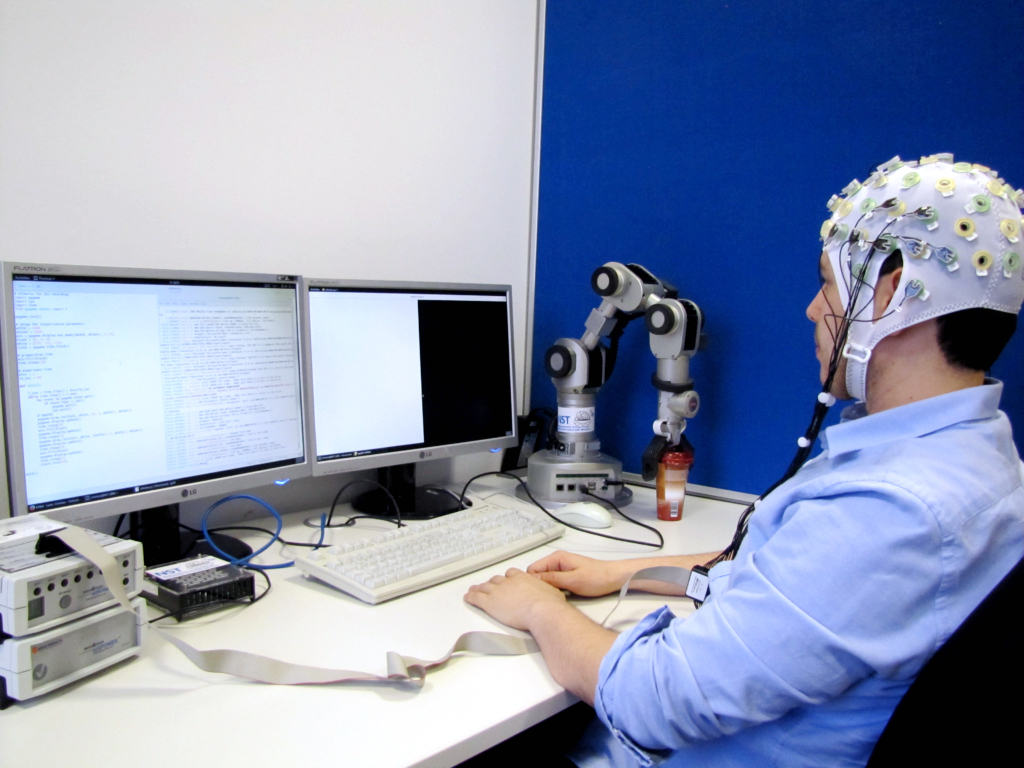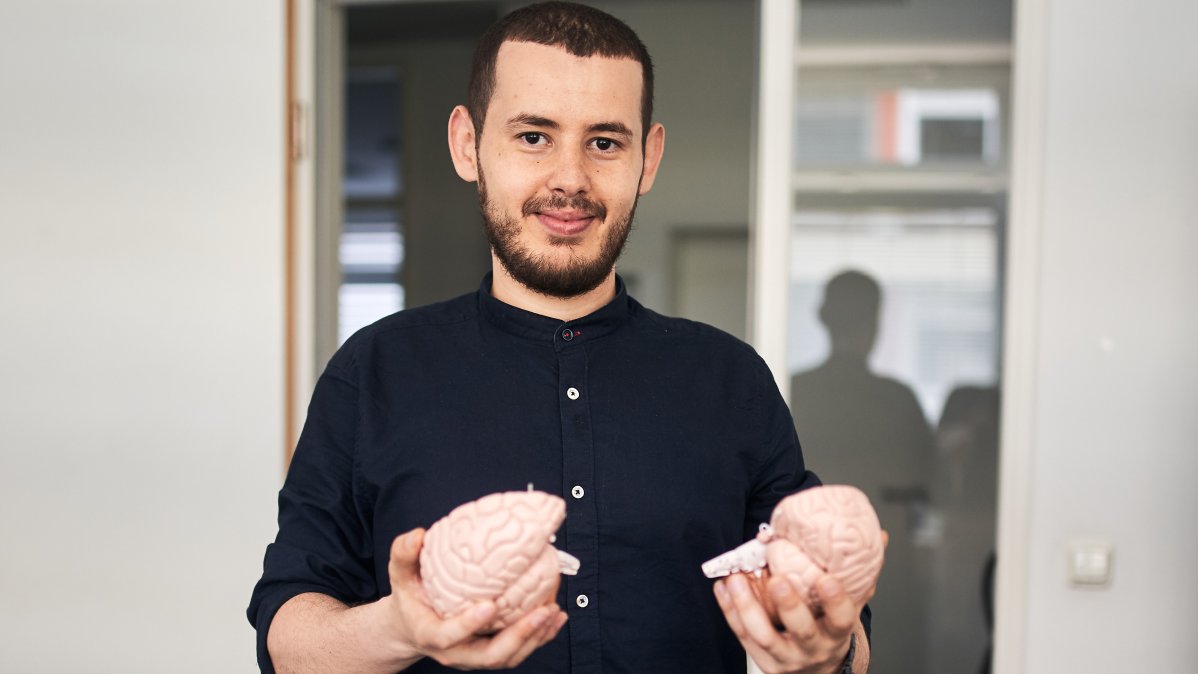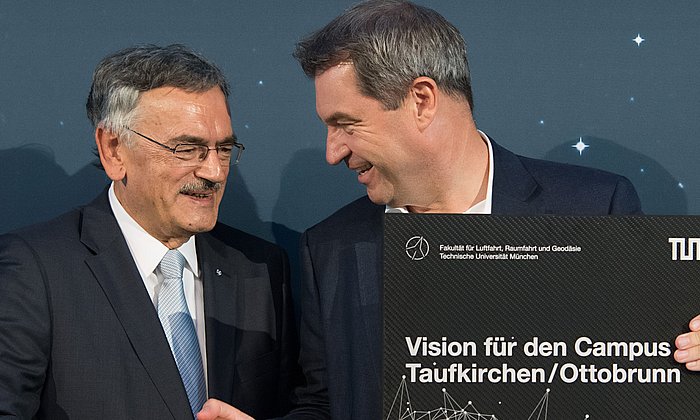Startup MyelinS to take part in NASA iTech competition
From health care to space robotics

Robots are an indispensable part of space exploration. While machines like the Mars rover „Curiosity“ resemble very basic model cars, there are plans to use humanoid robots during space missions. Remotely controlled by humans from inside spaceships or space stations these robonauts could be assigned dangerous tasks. Software designed by startup MyelinS could be a part of these future missions.
“Our software provides three basic features,“ says Zied Tayeb, a doctoral candidate at TUM's Institute for Cognitive Systems and, together with Samaher Garbaya, one of the minds behind MyelinS. “The first feature is navigation: We use machine learning algorithms to enable a robot to create an internal map of its surroundings and avoid obstacles.” This is important even in remotely-controlled robots, since it enables the pilot to concentrate on the actual task and let the robot deal with the navigation – a concept called shared control. “The second feature is tactile feedback,” continues Tayeb. “Our software can learn to translate input from the robots tactile sensors into output generated by vibration motors. Imagine, for example, a robot handling rock samples: The scientist in control would be able to feel the structure of these samples.”
Curiosity as a feature
The third major feature of the MyelinS software is curiosity. Many great discoveries start with a sentence like “Wait … that looks interesting“. “We use machine learning to teach our algorithm which kinds of things 'look interesting' and should be highlighted,” says Zied Tayeb. “Depending on which human expert trained the machine’s curiosity, this could be strange rocks, bent machine parts or three-eyed fish.” The MyelinS software is platform-independent and thus can be used as an interface for many different kinds of robots.
Beginnings in health care
When Zied Tayeb and Samaher Garbaya first thought about founding a company, they went in a very different direction. Tayeb had created “Gumpy”, an open source software package for brain-computer interfaces. “Gumpy” included the basic machine learning algorithms for the tactile feedback. “Our original project was to create software for prostheses that let amputees feel their limbs,” says Tayeb. “We created an advanced version of Gumpy with better algorithms and more features.” Together with two other former TUM students, Tayeb and Garbaya validated the functionality of their software in cooperation with people with missing limbs.
“About a year ago, I was talking to an old mentor. When he heard about what we were doing, he pointed out that space agencies might be very interested in brain-computer interfaces for their robots,” Tayeb narrates. “It wasn't easy to let the prosthetics project go , but the prospect of being a part of space exploration was an opportunity we didn't want to miss.” While the two fields may seem very different at first, the requirements for human-brain interfaces are in fact similar, he explains.
Support from TUM
The MyelinS team was supported by the TUM Gründungsberatung. They also received guidance and mentorship from UnternehmerTUM, the Center for Innovation and Business Creation at TUM - among others, they took part in the Xplore Pre-Incubation Bootcamp. „Gordon Cheng, Professor of Cognitive Systems, too, was also very supportive“, Tayeb adds. In the months to come, he and his colleagues are planning to formally found their company.
Next week, however, a special challenge awaits them: MyelinS is among the ten finalists of the 2019 NASA iTech Cycle II competition. On October 7 and 8, they will present their software in Las Cruces, New Mexico. While there is no financial gain for the three winning startups, will receive continued mentorship to help further develop the technologies for the commercial market.
- Every year more than 70 technology companies are established at TUM. TUM and UnternehmerTUM support new companies with programs tailored to the phases of the start-up process – from writing the business model to management training, and from market entry to a possible IPO. Up to 30 teams can use offices in the TUM Incubator to prepare the launch of their companies. TUM accompanies the most promising candidates on a two-week trip to Silicon Valley. With its own UVC venture capital fund, UnternehmerTUM invests in young technology companies that demonstrate high potential, offering them access to MakerSpace, a 1,500 square meter high-tech workshop for building prototypes, and the Bio.Kitchen biotech laboratory. According to the respected "Start-up Radar" survey, this support is unparalleled at Germany's major universities.
- The new TUM Department of Aerospace and Geodesy (LRG) will be launched in this year's winter semester. Over several decades TUM has built extensive expertise in the fields of aviation, aerospace and geodesy. The new department will now consolidate this expertise and strengthen the synergies among these disciplines.
- NASA iTech website and list of finalists
Technical University of Munich
Corporate Communications Center
- Paul Hellmich
- paul.hellmich@tum.de
- presse@tum.de
- Teamwebsite

